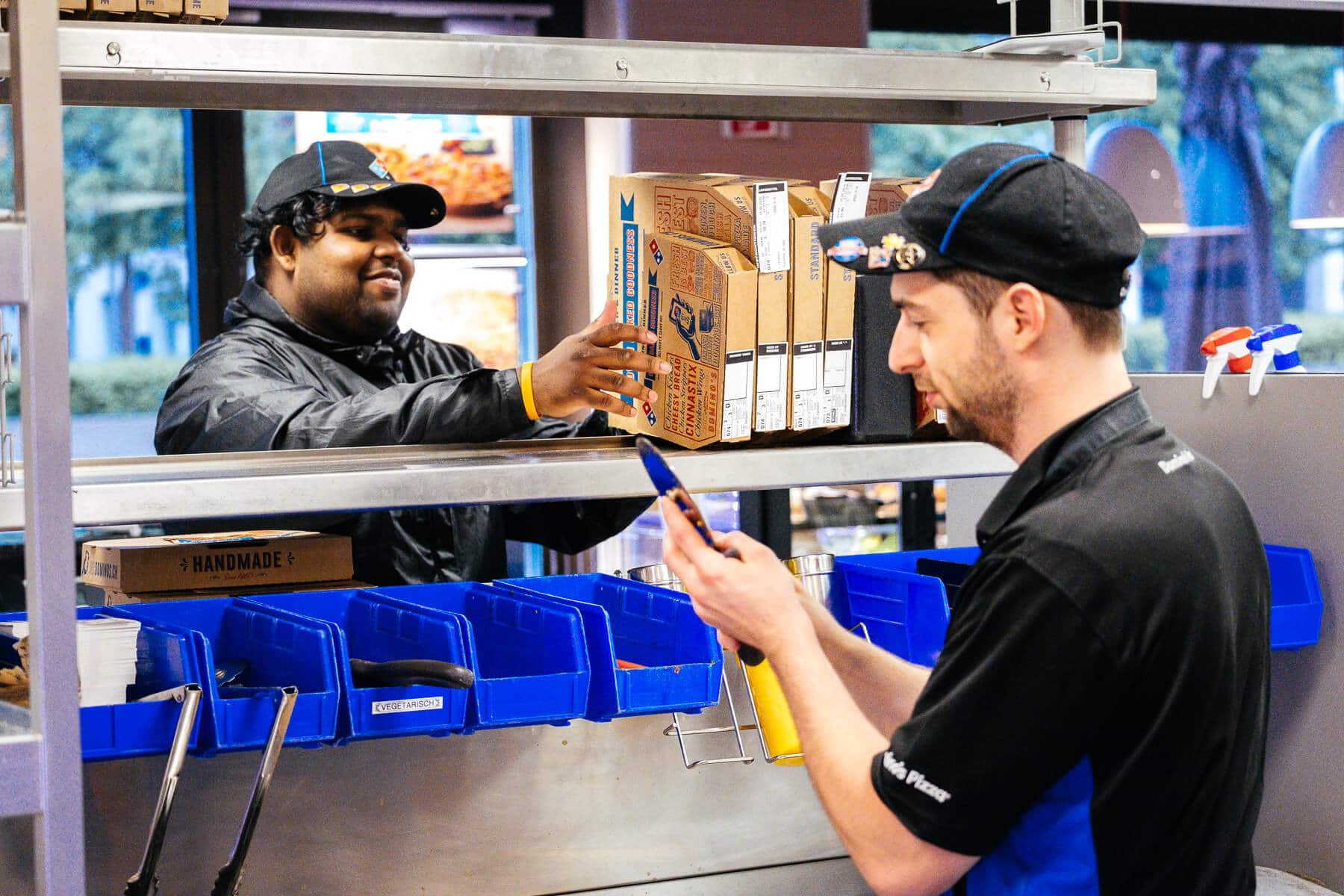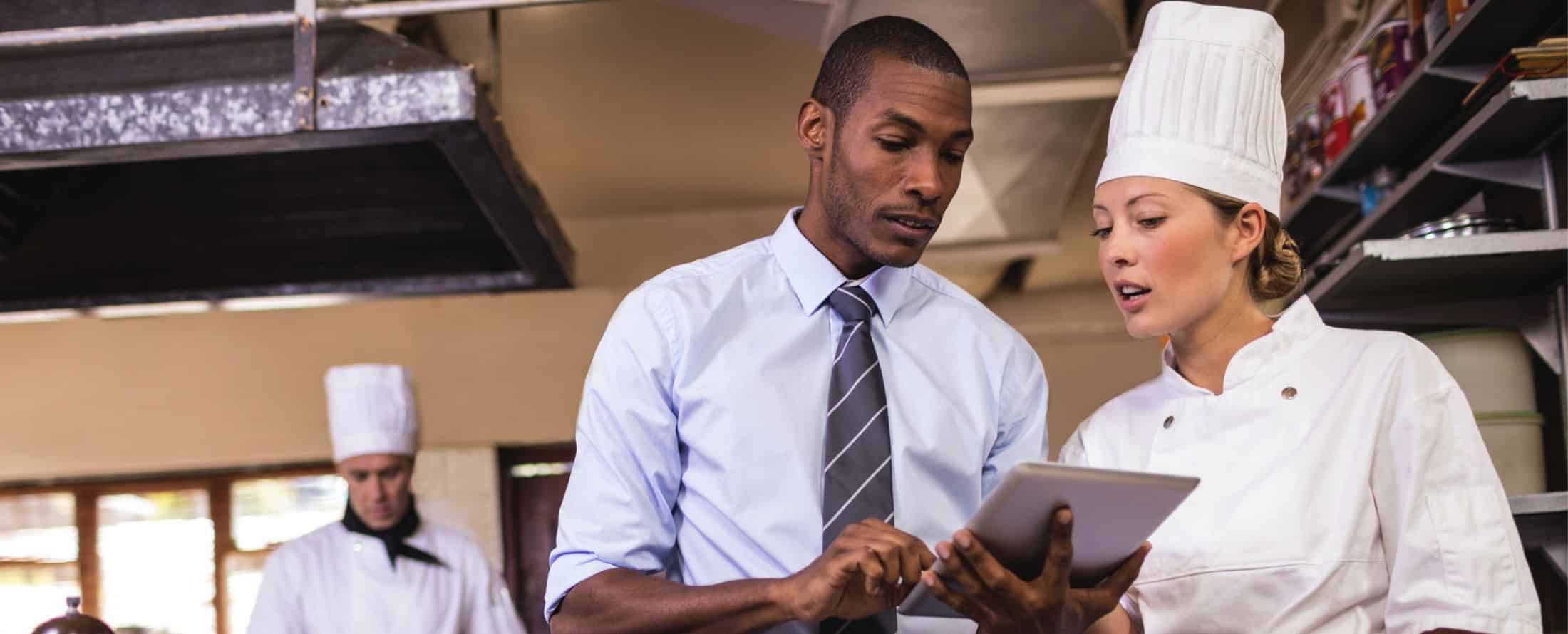There is a digital renaissance happening in the food service industry. From self-order apps to digital workforce management, restaurants are leveraging communication technology to refine processes and improve operations.
As a result, customers are enjoying faster, more efficient service. This evolution of “smart restaurants” is catapulting the dining experience into the next generation.
The Rise of Restaurant Tech
The days of handwritten orders and phoning it in are numbered. Smart restaurants are becoming more popular as the food service industry continues to design technology that improves operations and streamlines internal communications in order to enhance the customer experience.
Current restaurant tech trends include:
- Mobile apps for ordering and reservations.
- Employee apps for real-time, internal communication.
- In-house, self-service kiosks for ordering and paying.
- Kitchen display systems for accurate and efficient meal processing and delivery.
- IoT in restaurants: think stoves that can send messages to alert staff of a maintenance issue or technical malfunction.
While some companies are designing robotic kitchens and facial recognition systems, most restaurants are just beginning their digital journey. By automating tasks and creating a digital interface for customers and employees, restaurants experience several operational benefits such as:
- Increasing the speed of service
- Serving a higher volume of guests
- Improving upsells and increasing revenue
Why an Employee App Is a Must-Have for Smart Restaurants
Despite these recent digital strides, more than 32% of restaurants feel they could be using even more technology. Most restaurant tech is focused on guest experience, but employees are just as integral to the success of your restaurant. A mobile employee app like Beekeeper can bridge the restaurant tech gap by:
- Creating a digital hub to integrate different restaurant tech applications.
- Connecting employees and customers in real time for seamless service.
- Delivering important information directly to employees, allowing them to dedicate more time with guests.
- Automating and delegating administrative tasks, like shift scheduling and payroll.
- Improving access to shift schedules and reducing absenteeism.
- Standardizing food prep and presentation and streamlining quality control.
Improving communication between the front and back of the house.
Smart Restaurants Deliver Faster, More Accurate Service
Restaurants operate at a rapid-fire pace. One small glitch can send an entire shift spiraling down into chaos. Smart restaurants can effectively manage the speed of service, especially in quick service restaurants (QSRs) with multiple locations, where enterprise-wide repetitive functions can be automated for faster, more accurate results.
Watch how Beekeeper’s employee app helps streamline food and beverage operations for Hyatt Place
A wrong order or a missed reservation might seem easily fixable, but today’s consumers are quick to vent their frustrations with customer service on social media. A misstep in service can translate to a negative tweet or online review and that can cost customers.
97% of consumers research businesses online before they visit them in person.
Restaurant tech can reduce the risk of human error. For instance, a digital workplace like Beekeeper with a mobile component can consolidate communication for faster, better service by:
- Enabling real-time communication. This allows staff to resolve any problems immediately. Real-time capabilities between FOH and BOH reduce service disruptions.
- Delivering up-to-the-minute information to staff about any time-sensitive guest information, like impromptu menu changes.
- Automating workflows, like inventory management, which reduces operational congestion and allows employees to spend more time on guest-oriented responsibilities.
Quick Case Study: Domino’s Pizza
Domino’s Pizza is famous for its speedy service. Every one of the company’s 14,000 locations needs to run a tight operational ship to deliver on that promise. Workforce management technology was the solution.

Employees use the Beekeeper employee app to:
- Create unified, real-time internal communications: With Beekeeper, Domino’s now has an enterprise-wide internal communications platform so every employee has access to the same information at the same time.
- Automate HR: With Beekeeper, many repetitive HR workforce management tasks are automated, allowing HR to focus on people operations, like recruiting and retention. HR now uses Beekeeper for onboarding and training videos.
- Boost sales: Streamlining communications and integrating operations into workforce management tech has led to record sales for some Domino’s locations.
Technology Gives Restaurants a Competitive Edge with Employees
Technology could also be the solution to employee retention. With a high turnover rate of 75%, restaurants struggle to keep employees long term, creating a fragmented experience for customers who encounter new employees unfamiliar with the menu and the environment. An employee app reduces turnover by:
- Creating operational continuity and delivering instantaneous information which reduces stress in the fast-paced environment, making it easier for employees to do their jobs.
- Serving as a platform for employee support through onboarding and continuous training which improves job satisfaction, engagement, and retention.
- Giving employees a deeper connection to the brand. The more employees are digitally connected the more they’re emotionally connected. This is especially important in QSRs (quick service restaurants) that have multiple locations and many employees.
Quick Case Study: MOD Pizza
MOD Pizza is a rapidly-expanding pizza chain. With over 6,000 employees, and 100 new locations every year, the company needed to unify communications in real time while supporting their employee-centric culture.
MOD believes,
“if we take care of our employees, they’ll take care of you, and our business will take care of itself.”
Here are the results they’ve seen after adding Beekeeper to their restaurant tech:
- Two-way communication. Internal communication barriers are gone, allowing employees to communicate directly with one another and with management.
- Restaurant tech that supports the mission. MOD bills itself as a “superfast pizza experience.” And it has the tech to prove it. Orders can be placed through their app, which personalizes offers and remembers orders for repeat customers. Beekeeper elevated internal communications to keep pace with its external-facing tech.
- Lower costs and higher revenue. Keeping operations streamlined and more efficient through digital workforce management has been instrumental in keeping MOD Pizza’s expansion running smoothly. Improved communication and more efficient operations have helped MOD’s numbers, too. Last year’s revenue grew to $312 million.
To learn how to leverage communication technology to improve operations in your restaurant, download our full Domino’s Pizza case study.
Most Frequently Asked Questions
Smart restaurants are becoming more popular as the food service industry continues to design technology that improves operations and streamlines internal communications in order to enhance the customer experience. Current restaurant tech trends include:
– Mobile apps for ordering and reservations.
– Employee apps for real-time, internal communication.
– In-house, self-service kiosks for ordering and paying.
– Kitchen display systems for accurate and efficient meal processing and delivery.
– IoT in restaurants: think stoves that can send messages to alert staff of a maintenance issue or technical malfunction.







